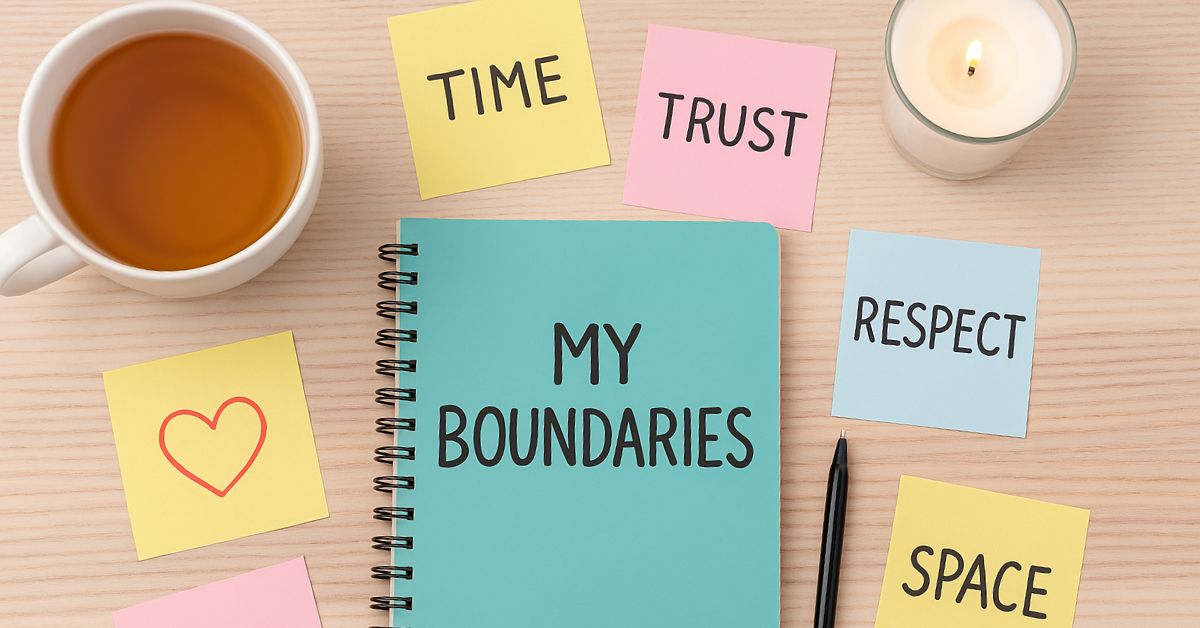
How To Set Healthy Boundaries In A New Relationship
Navigating a new relationship is an exciting experience, particularly later in life. Yet, it’s also a time when clear communication and mutual understanding become absolutely essential. After all, a strong relationship is built on respect—and respect often starts with setting healthy boundaries.
Boundaries serve as personal limits that protect your emotional, physical, and mental well-being while guiding how you give and receive love. But how do you establish these boundaries when everything feels new? Below, we explore practical tips and insights tailored specifically for those in their 50s, 60s, and 70s.
Why Boundaries Matter in New Relationships
Boundaries are key to building trust and preventing misunderstandings. They enable you to express your needs, desires, and limits without fear of judgment. When respected by both individuals, these boundaries pave the way for a relationship that feels safe and fulfilling. Without boundaries, there’s room for confusion or even resentment, which can erode trust over time. By keeping expectations clear from the start, you avoid potential conflicts and ensure both partners feel valued.
For mature singles, boundaries take on an even greater importance. You’ve likely experienced past relationships that taught you a great deal about what you need—and don’t need—to thrive emotionally. Whether you’re re-entering the dating world after many years or simply seeking something refreshing and new, honoring your personal boundaries is a powerful way to ensure the relationship aligns with your values.
Types of Boundaries You Should Consider
Different aspects of a relationship require different types of boundaries. Here are key areas to address in any new relationship:
- Emotional Boundaries
- Be clear about how you’d like to give and receive emotional support. For instance, are you comfortable sharing personal challenges right away, or do you need some time to build trust first?
- Discuss what kind of communication helps you feel secure. Do you prefer daily check-ins, or do you value a bit more personal space?
- Physical Boundaries
- Physical affection is deeply personal and may evolve as you grow closer. Be open about what feels comfortable for you—whether that means handholding, hugging, or something more intimate—and check in with your partner’s comfort levels as well.
- Respect each other’s need for personal space, whether it’s alone time at home or maintaining separate routines that ground you.
- Social Boundaries
- Early conversations can prevent awkward moments when it comes to meeting friends, family, or children from previous relationships. Clarify when and how you’d like to merge social circles.
- Decide together what levels of privacy suit you, such as whether you prefer keeping the relationship low-key until it becomes more serious.
- Practical Boundaries
- Financial matters are often delicate for people dating later in life. Set clear expectations about expenses early on—who pays for what and whether financial independence is essential to both of you.
- Discuss how much time you can realistically commit to the relationship, especially if you’re balancing work, family, and personal interests.

How to Communicate Boundaries Effectively
Healthy boundaries won’t work if they’re not communicated openly and respectfully. Start by ensuring that both you and your partner are comfortable discussing expectations, even when the conversation feels vulnerable. Here are a few tips to help:
- Choose the right time: Timing matters when bringing up boundary-related topics. Wait for moments when both you and your partner feel relaxed, rather than during an argument or after a long day.
- Use “I” statements: For instance, instead of saying, “You’re too clingy,” try, “I feel overwhelmed when we text constantly throughout the day. Could we find a balance?”
- Be clear and direct: Avoid hinting or assuming your partner will figure things out. Be straightforward about your needs, so there’s no uncertainty.
- Encourage two-way dialogue: Your partner likely has their own boundaries too, so foster a conversation that invites mutual sharing. Respect and understanding go hand in hand.
Recognizing and Respecting Your Partner’s Boundaries
Just as you have your own limits, your partner does too. Being attentive and respectful of their boundaries will show that you value their feelings, which strengthens the connection. Keep these ideas in mind:
- Ask questions! If you’re unsure about something—like whether they’re comfortable with social media posts featuring both of you—don’t hesitate to ask.
- Avoid making assumptions. For example, even if you’re ready to introduce them to your family, they may need more time.
- Pay attention to non-verbal cues. Sometimes body language—like pulling away or remaining silent—can indicate discomfort.
A relationship rooted in mutual respect will naturally adapt as both partners learn more about one another.
Common Challenges and How to Overcome Them
It’s normal to hit a few bumps as you explore each other’s boundaries. Differences in communication styles, past relationship baggage, or insecurities might surface, testing the waters. Here’s how to address potential challenges:
- What if your boundaries clash?
Focus on compromise. For example, if your partner is more introverted while you’re very social, aim for balance. Maybe you agree to a quiet night at home one weekend and a social event the next.
- What if boundaries are unintentionally crossed?
Misunderstandings happen. If someone crosses a boundary, approach the situation calmly rather than defensively. Explain how it made you feel and reaffirm the importance of respecting that limit.
- What if someone feels hurt by boundaries?
Remember that boundaries aren’t meant to exclude or control your partner—they’re a way to maintain your individual well-being. Reassure them by showing appreciation for the effort they’re putting into understanding you.
Tips for Upholding Boundaries Over Time
Once boundaries are set, the real work begins—maintaining them even as the relationship evolves. Consistency is essential, and it starts with both partners remaining fully present and mindful of each other’s needs. Here’s how:
- Regularly check in with one another. Ask if anything about your boundaries needs to change as your connection deepens.
- Celebrate small wins. For instance, if your partner honored a boundary that was particularly important to you, express gratitude. Positive reinforcement can make all the difference.
- Remain flexible but firm. Healthy relationships allow room for growth while ensuring your core boundaries stay intact.
By treating boundaries as a living, breathing aspect of your bond, you set a foundation that can grow stronger with time.
Final Thoughts on Setting Relationship Boundaries
Establishing healthy boundaries takes effort, but the reward is a relationship where both partners feel respected and cared for. Whether you’re redefining intimacy, sharing your days, or exploring life’s next chapter together, knowing your limits—and honoring them—is a way to build something fulfilling and meaningful.
Dating later in life offers a unique opportunity to apply everything you’ve learned about what works and what doesn’t. By setting clear and loving boundaries, you empower yourself and your partner to create a partnership grounded in trust and mutual respect.











